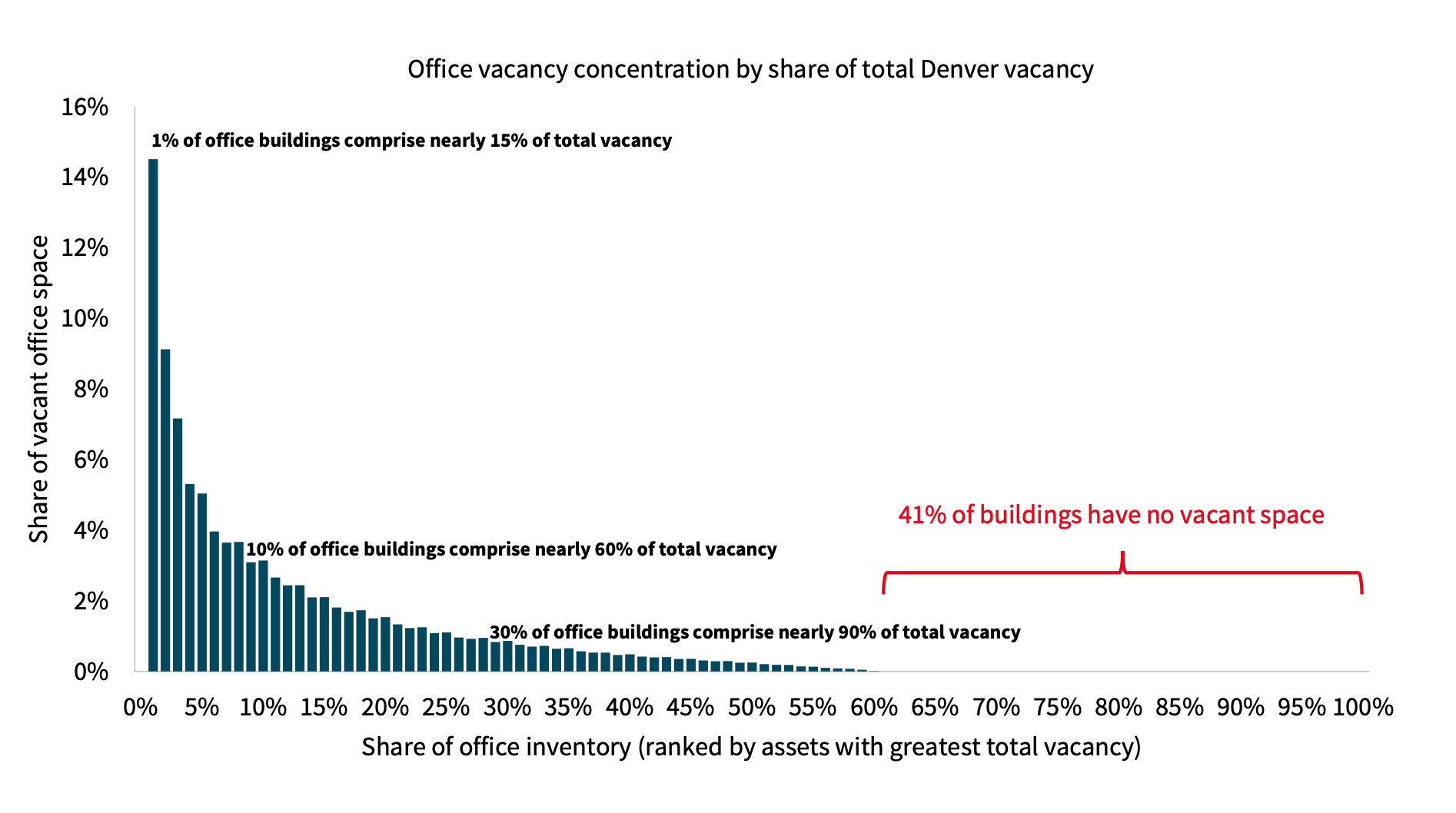JLL’s latest Chart of the Week reveals that nearly 60 percent of Denver’s office vacancy is concentrated in just 10 percent of buildings.
- Vacancy remains largely concentrated in a limited number of buildings. Despite headlines of widespread vacancy in the office sector caused by the pandemic and changing work habits, the older-vintage “commodity” segment has born an outsized proportion of the impact since 2020 – today, 30% of existing office buildings comprise 89% of total vacancy in the market.
- Older product has taken the brunt of move-outs: Offices built in the 1970s and 1980s have been particularly impacted by the pandemic and cyclical headwinds of 2022, comprising 58% of the new vacancies that have emerged since 2020.
- New assets continue to absorb space: With underperformance concentrated in a smaller subset of buildings, quality segments of the market have performed well despite broader challenges: vacant space in offices developedbetween 2010-2019 has declined by 21% since the end of 2019.
Janessa Biller, vice president at JLL Denver, commented: “I get asked all the time who is still leasing office space and this graph illustrates that companies want to be where the “buzz” is. In Denver’s office market, we’re experiencing a ‘tale of two cities’ with some parts of downtown struggling while others thrive. The pandemic and changing work habits have hit the older, commodity buildings hard, but the quality spaces with great amenities and easy access to retail and restaurants are holding strong. It’ll take time for the Denver office market to fully recover and reach pre-pandemic occupancy levels, but the companies investing and leasing space in downtown Denver demonstrate a promising sign of revitalization.”









